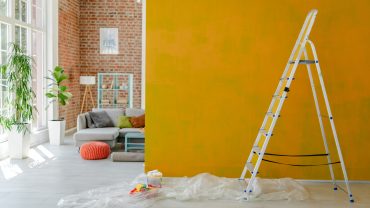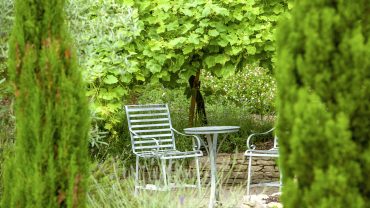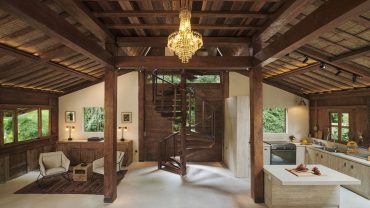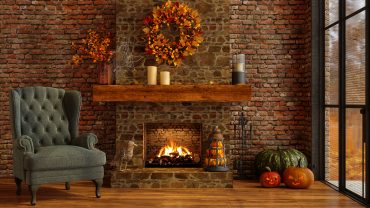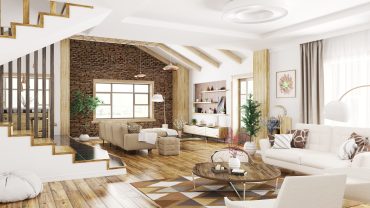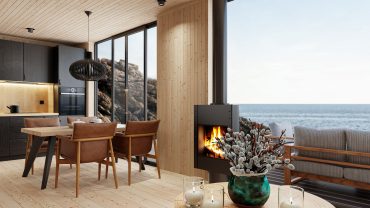When it comes to deco style, just what is Mediterranean interior design? As timeless as the sea itself, the inspiration behind Mediterranean interior style is deeply connected to the geographical and historical context of the region. The bright, sunny climate, diverse landscapes, and a rich tapestry of cultures have all influenced this design style.
Historically, Mediterranean homes were designed with functionality and comfort in mind, suited to the warm climate and outdoor-focused lifestyle. This has translated into modern designs that emphasise natural light, open spaces, and a harmonious blend of ramshackle and rustic old-world charm with contemporary convenience.
So, whether you’re revamping a country home or looking to bring a touch of Mediterranean magic to a town centre loft space, understanding the essence of Mediterranean interiors is the key to creating an inviting, warm, and timeless space.
The Principles of Mediterranean Interior Design

A modern Mediterranean style kitchen. (Credit: FollowTheFlow via Getty Images)
The overarching principles of Mediterranean interior style are rooted in simplicity, comfort, and a connection to the outdoors. Open, airy layouts are a hallmark, often featuring large windows or doors that open to exterior space, seamlessly blending indoor and outdoor living.
Furnishings are typically sturdy and functional, yet with a handcrafted feel, showcasing the craftsmanship and natural beauty of the materials. Decorative accents such as mosaic tiles, colourful textiles, and ornate details add character and warmth, while the overall design remains uncluttered and focused on practical living.
Mediterranean interiors are often characterised by their use of natural materials like wood, wrought iron, and stone, along with a colour palette inspired by the sea and sky, incorporating blues, greens, and earth tones. The warmth of terracotta tiles, the coolness of roughly plastered white walls, and the rustic charm of wooden beams all come together to create spaces that are both inviting and aesthetically pleasing.
A Cool Clash of Cultures

A Mediterranean guest bedroom with wicker chandeliers. (Credit: Artem Bolshakov via Getty Images)
When the topic of Mediterranean interiors comes up, we automatically think about Spanish villas, the coastal homes of Santorini in Greece, or Sicilian sunsets, but did you know there are twenty-one countries that have a border touching the Mediterranean Sea!
Mediterranean interior design is a rich and diverse tapestry, woven from the cultural threads of the countries bordering the Mediterranean Sea. This eclectic design style seamlessly integrates elements from various regions, creating a unique and vibrant aesthetic. From the bold and intricate North African textiles from Tunisia, Algeria and Morocco that add warmth and colour, to the distinct Balkan design influences from Slovenia, Croatia and Montenegro marked by their rustic and artisanal craftsmanship, each element contributes to the overall tapestry.
The classic styles of Southern European countries, with their elegant Italian marbles, Greek-inspired whitewashed walls, and Spanish terracotta tiles, provide a timeless foundation for this design philosophy. This fusion of regional influences results in a style that is both diverse and harmonious, reflecting the rich cultural mosaic of the Mediterranean basin.
A Harmonious Blend of Traditional and Contemporary

A living space within a Spanish villa, decorated in a modern Mediterranean style. (Credit: Artjafara via Getty Images)
In recent years, a distinction has emerged between the traditional, and what is known as modern Mediterranean interior design.
While traditional design focuses on rustic simplicity and historical elements, modern Mediterranean interior design tends to incorporate contemporary trends, often featuring cleaner lines, less ornate detailing, and a more neutral colour palette.
This evolution shows the adaptability of Mediterranean interior style, proving that it can remain relevant and appealing in changing times. The key to both traditional and modern Mediterranean style lies in its ability to merge functionality with beauty, creating spaces that are not only visually stunning but also deeply connected to the Mediterranean way of life.
The Mediterranean Colour Palette

Mediterranean colour palette, with warm, earthy tones (Credit: Margarita Khamidulina via Getty Images)
The colour palette of Mediterranean interior design is a vivid reflection of the region’s natural landscape and cultural vibrancy. It predominantly features warm, earthy tones like terracotta, ochre, and burnt sienna, reminiscent of sun-baked soil and rustic architecture. These are complemented by the serene blues and greens, echoing the tranquil hues of the Mediterranean Sea and its lush foliage. Accents of bright, sun-kissed yellows and deep, inviting reds add a touch of energy and passion, akin to the region’s lively festivals and rich spices. This harmonious blend of natural, earthy tones with bursts of vibrant colours creates a welcoming and lively interior atmosphere, embodying the essence of Mediterranean life.
Fabulous Furniture, Delightful Decor

A dining area featuring typical Mediterranean furniture. (Credit: xavierarnau via Getty Images)
Mediterranean interior design emphasises furniture and decor that are not only aesthetically pleasing but also functional and durable, reflecting the region’s emphasis on comfort and practical living.
Wooden Furniture
Heavily used, especially dark, sturdy woods like olive, oak, and pine. Wooden furniture in Mediterranean interiors often features ornate, hand-carved detailing and a rustic, weathered look where natural imperfections enhance the beauty.
Wrought Iron
Used for both furniture and decorative accents, wrought iron can be found in bed frames, chairs, tables, and decorative items like candleholders, railings, and light fixtures.
Stone and Marble
These materials are often used for tabletops, flooring, and decorative accents. They add a natural, earthy element to the space and are highly valued for their durability and timeless beauty.
Terracotta and Ceramics
Used for both decorative and functional items, such as pots, vases, tiles, and sometimes furniture accents, these materials add warmth and a handcrafted quality to both internal and external space.
Leather
Often used for upholstery, leather adds richness and comfort to furniture like sofas and chairs. It can be combined with wood or wrought iron for a more traditional look.
Rattan and Wicker
Used for both indoor and outdoor furniture, these materials add a light, airy feel to the space, reflecting the Mediterranean’s outdoor-centric lifestyle.
The Timeless Appeal of Mediterranean Interior Design

A Mediterranean styled living area. (Credit: Westend61 via Getty Images)
Mediterranean interior style is a celebration of the region’s diverse culture, natural beauty, and rich history. It’s a testament to a lifestyle that values simplicity, functionality, and a deep connection to the natural world.
Through its warm colour palette, use of natural materials, and a blend of rustic and elegant elements, this design style creates spaces that are both inviting and aesthetically pleasing.
Whether incorporating the rustic charm of the countryside, the vibrant textures of North Africa, or the sleek interpretation of modern Mediterranean interior design, this style offers a versatile, inviting and timeless approach to the art of design.




